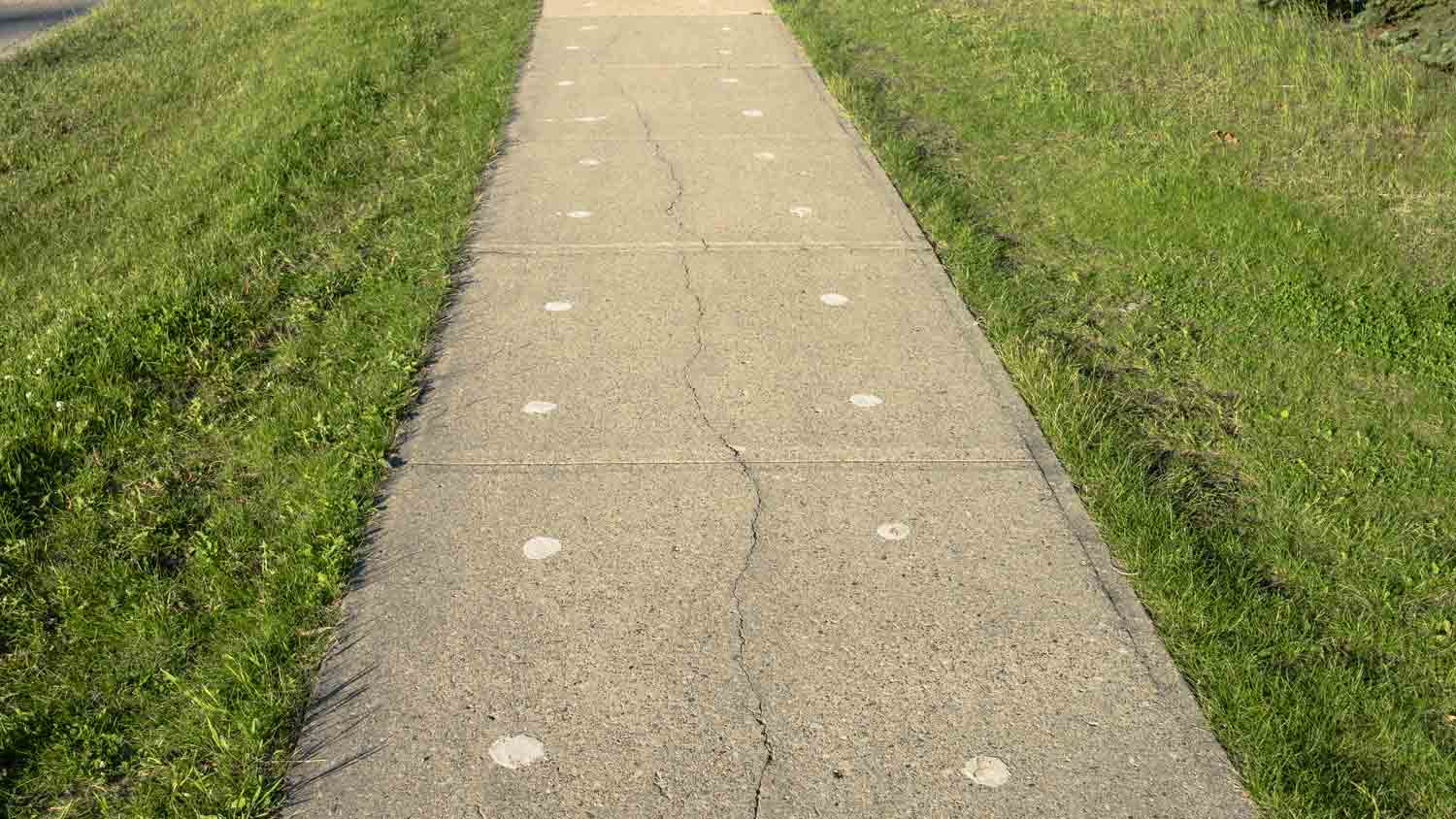How to Mix and Use Self-Leveling Concrete
Water resistance and ease of application make this mixture a popular option


- Mixing tool (Use a corded drill and paddle mixer for best results)
- At least 2 mixing barrels/buckets
- Leveling compound rake and/or squeegee trowel
- Paint roller
- Paint tray
- Water
- 1 or more bag(s) of self-leveling concrete
- 1 quart or more bottle(s) of primer
- Painter’s plastic
- Painter’s tape
For those seeking an easy-to-apply DIY hard floor solution, self-leveling concrete could be the perfect option. This blended concrete product is easy to make and dries in just a few hours, giving you a subfloor or standalone option that looks good and holds up to heavy traffic.
But if you’re not a concrete mixing pro (and hey, who among us is these days?), you might be wondering how to mix and use these products. In this how-to guide, you’ll learn how to use self-leveling concrete in five simple steps.
Take Inventory of Your Existing Floor
Will your floors benefit from adding self-leveling concrete, or is another solution, such as bringing in a concrete repair specialist, the better choice?
Self-leveling concrete (sometimes called self-leveling underlayment or ‘SLU’) is particularly effective for cracked, split, or very uneven floors. It works best as a subfloor for tile and carpet or can be used as a standalone surface indoors. Those with radiant heat subflooring could also be prompted to use self-leveling concrete to cover up their heating element.
When installing the overlay over cracked concrete, it’s best to ensure that the cracks are not continuing to shift. If the crack is wide enough to fit a credit card or a quarter, pay close attention to the packaging for pretreating these cracks to minimize the likelihood of them reoccurring.
“If your surface is a wooden subfloor, give it the “bounce test” prior to installing the overlay,” said Matt DiBara, Angi Expert Review Board member and owner of DiBara Masonry. “Walk along the surface of the floor and gently bounce up and down. If you feel shifting or soft areas, you may need to consult a pro to stabilize the floor prior to installing the self-leveling underlayment.”
On the other hand, outdoor surfaces aren’t the best option for self-leveling concrete. This is because the substance is a combination of concrete and polymer, which spreads easier than regular concrete but isn’t as strong and won’t set on uneven surfaces.
Prepare Your Floor
Preparation is the key to a successful DIY self-leveling concrete job, especially if you’re laying it over existing concrete. Poor prep leads to a weak bond between the new and old concrete, which means a greater likelihood of chips and cracks later.
Be sure to:
Screw down any loose flooring
Clear away any obvious debris
Dam up any gaps on the perimeter that lead to pipes, vents, or doors
Apply painter’s tape to protect pipes or other fixtures
Vacuum the floor (do this last)
As part of your prep, grab a few extra bags of self-leveling concrete at the store (or order extra). A standard size bag will cover 50 square feet at 1/8 inch thickness. Even a slightly greater thickness could necessitate several more bags of product. Popular brands of self-leveling concrete include Akona, Sikafloor, Henry, and LevelQuik.
Prime Your Floor
The application of primer is vastly important for a smooth, strong surface. Before proceeding, be sure to read the manufacturer’s instructions for the specific self-leveling concrete product you purchase. Along with this guide, follow any additional instructions listed.
Most primers are a water-based acrylic substance. They help retain moisture and ensure the self-leveling concrete cures properly once applied. Pay particularly close attention to the required amount of dry time before adding concrete. Plus, some products may recommend using only one brand or type of concrete with their primer.
Apply the Self-Leveling Concrete
 Photo: Andrey Gonchar / Adobe Stock
Photo: Andrey Gonchar / Adobe StockAfter waiting the appropriate amount of time, it’s time to lay down your self-leveling concrete. (PS: Having a friend or family member mix a fresh batch while you apply can be incredibly helpful.)
Be sure to:
Add the correct amount of water to your concrete per the package instructions (too much or too little will result in lumps and inconsistencies)
Start at the far side of the room and work your way toward the exit
Pour heavy and allow the mixture to flow
Use your squeegee trowel or leveling compound rake to fix any inconsistencies
Mix and pour with a sense of urgency to allow for uniform drying
If you’ve got a large area to cover, it might be worth investing in a mixing barrel with latches. It will keep the self-leveling concrete from drying out as you apply it—and could keep you and the friend or family member helping out from exchanging anxiety-induced barbs as you rush to lay down the product.
Let Dry and Assess
Some SLU products are made with rapid-dry features and can dry in less than an hour. Others might take up to six. Once it’s dry, look for small bubbles, pinholes, or inconsistencies. You should be able to scrape these away if they’re right at the surface.
Finally, clean any tools you used during this process immediately. If you let them dry, the compound will never come off. Enjoy your new floors as-is, or proceed into the next part of your DIY floor installation if these are just your subfloors.




















